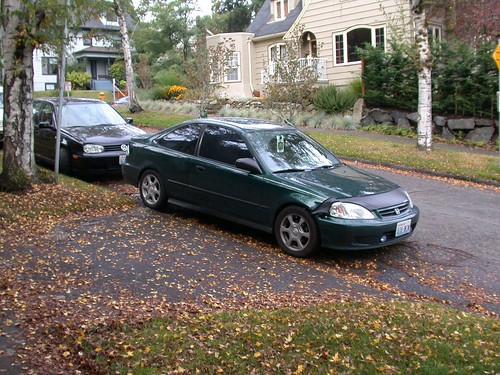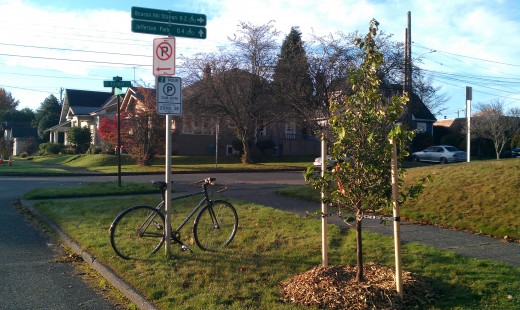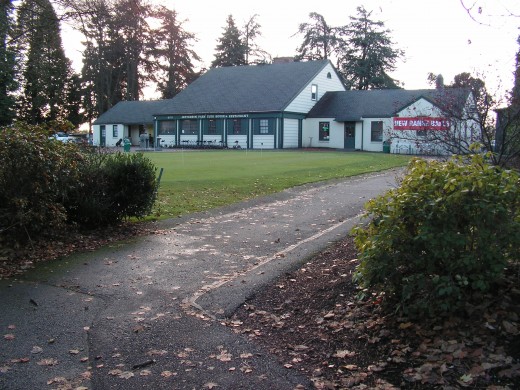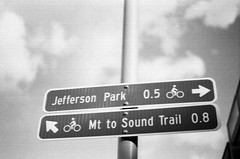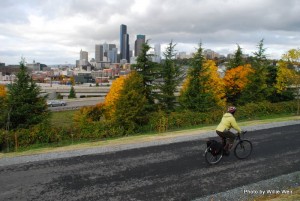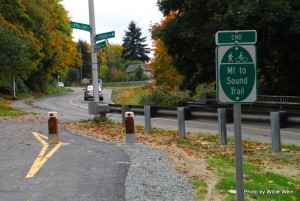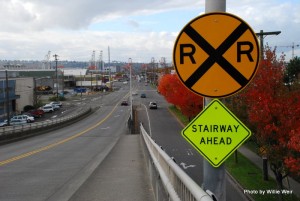
This is the first in a series of three articles on the current plans and process to demolish the Jefferson Park Golf Clubhouse.
by Mark Holland and Mira Latoszek
This fall, the Seattle Department of Parks and Recreation (DOPAR) plans to demolish the historic 1936 Jefferson Park Municipal Golf Course Clubhouse on Beacon Hill. DOPAR claims the Clubhouse is of no importance to Seattle history and culture. On February 15, 2012, a landmarks nomination for the Clubhouse was presented before the Seattle Landmarks Preservation Board.
The author of the nomination is Bassetti Architects, hired by DOPAR to both prepare the landmarks nomination and to design the replacement facility. Bassetti was about 50% of the way through the new clubhouse/driving range design when DOPAR submitted the nomination to the Landmarks Preservation Board. The Historic Preservation Officer, Karen Gordon, head of the Landmarks Preservation Board staff, approved the nomination for submittal to the Board.
During their presentation, Bassetti Architects and the Parks Department diminished the historical and architectural aspects of the Clubhouse on all six standards in SMC 12.45.350, the Seattle Municipal Code which defines the standards for historic designation of buildings and sites in Seattle.
In a cover letter to the Landmarks Preservation Nomination for the clubhouse, DOPAR Superintendent Christopher Williams details how the Clubhouse fails to meet the six standards for historic designation in SMC 12.45.350. After citing Christopher Williams’ cover letter, the Parks Department project coordinator, Susanne Rockwell, addressed the Board. From the meeting minutes:
“She said that this nomination was submitted as part of the MUP process. She said that this building is not part of the Olmsted plan, many alterations have been made, and it does not meet the needs of DOPAR now. She said that DOPAR has been a good steward and has twenty five landmark properties but did not support nomination.â€
Four Beacon Hill community members spoke in support of the Clubhouse. One community member noted the nomination was incomplete because it was for the “building only” and did not include the putting greens, forcing the Board to discuss the Clubhouse out of the context of rest of the Golf Course. From the minutes of the meeting:
“She said that the nomination has a hole in it and the putting greens need to be included; all information needs to be included in the review and if the clubhouse and putting greens are not looked at together it doesn’t make sense.”
The Landmarks Preservation Board chair noted that, according to the rules, they could only consider the contents of the nomination. The Board staff then recommended against approval of the nomination. The Board vote ended in a split; four in favor of approval and four against. Without a majority this meant the nomination failed: the history of the Jefferson Park Golf Clubhouse officially declared not “important” in the Landmarks Preservation Board archives.
A brief discussion followed the vote. Two Board members noted the absence of the putting greens from the nomination. From the meeting minutes:
“Ms. Strong said this was a difficult one for her; she learned to golf here. She supported nomination and wished the putting greens were included… Mr. Hannum noted the loss of integrity but said the building deserved more analysis; he supported nomination. He said he would be more comfortable if the putting greens were included.”
On August 9, 2012, the Department of Planning and Development (DPD) approved the Master Use Permit (MUP) application for concept approval and land use variances. All that DOPAR needs now is City Council “Concept Approval” of the new plan, as described in SMC 23.76.064.
The Seattle City Council will vote either for or against “Concept Approval” for the Bassetti plan in a hearing before the Land Use Subcommittee chaired by Councilmember Richard Conlin on September 12, 2012. If the City Council approves the new design concept, the Golf Clubhouse and the century long history of the Jefferson Park Golf course will be tossed in the trash like yesterday’s newspaper.
Meanwhile, just a few miles away, over at the West Seattle Golf course, it is a different story. DOPAR will fully renovate the Clubhouse, and will not ruin the integrity of the historic golf course with a driving range: a project cancelled last year by Parks Superintendent Christopher Williams due to overwhelming public pressure.
What exactly do DOPAR, Bassetti Architects, the Historic Preservation Officer, and four members of the Landmarks Preservation Board find so uninteresting about Jefferson Park Golf History?
Coming up next: The vanishing history of Jefferson Park Golf, Part II: Dreamers and Builders.
Mark Holland and Mira Latoszek are long time Beacon Hill residents, founding members of the Jefferson Park Alliance (JPA), and both served on the Jefferson Park Planning Committee (JPPC) during the North Beacon Hill Neighborhood planning process from 1998-2000. Mira is a co-author of Seattle’s Beacon Hill.
